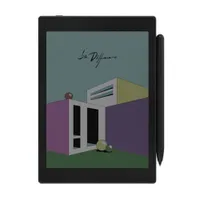TechRadar Verdict
The Kobo Libra line of ereaders has consistently been TechRadar’s pick of the best ereader for years, and the Kobo Libra Colour continues that trend. While its color screen and the addition of writing features are excellent updates by themselves, this 7-inch ereader, like its predecessor, continues to offer really good value. You’ll need to purchase the Kobo Stylus 2 separately to scribble on the Libra Colour, but I think it’s a fair bargain given its price point isn’t a huge leap over the previous model and it’s a lot cheaper than some of its competition.
Pros
- +
Good size for portability and usability
- +
Relatively affordable for a color ereader
- +
Full writing features
- +
Repair kits available
Cons
- -
Couple of functions suffer from lag
- -
Stylus sold separately
Why you can trust TechRadar
Kobo Libra Colour: Two-minute review
In April 2023, I wrote an article about how I wanted a small-screen ereader with a color display and writing features. It seems like Japanese-Canadian ereader maker Kobo heard me, releasing what I wanted – well, almost – in the Kobo Libra Colour. I would have loved an 8-inch device, but then I’ve been a fan of Kobo’s Libra line of 7-inch ereaders since the first one was launched in 2019. They’ve been TechRadar’s pick of the best ereaders since then, including the Kobo Libra 2 from 2021.
The trend continues with the Kobo Libra Colour, which is a double-whammy upgrade over its predecessor.
The Libra Colour looks identical to the Libra 2, which I think is great – why fix something that isn’t broken? The page-turn buttons and the slightly curved thicker bezel make the ereader really comfortable to hold and use in one hand. What’s new, though, is its display.
As the name indicates, the Kobo Libra Colour gets the E Ink Kaleido 3 screen that supports 4,096 hues, and is currently the best color e-paper display being used on consumer devices.
I compared the Libra Colour with what I would consider its biggest rival, the Onyx Boox Tab Mini C, and thanks to the smaller size of the screen (7 inches vs 7.8 inches), text and images on the Libra Colour are sharper and the colors slightly more saturated even though they both use the same screen technology. While I admit I prefer the slightly larger screen for note-taking, the 7-inch Libra Colour is the sweet spot when it comes to portability. It's also a lot lighter than its competition.
While the color display alone would make it a worthy update, Kobo didn’t seem to be satisfied with just one new feature – the company also gave the Libra Colour writing capabilities. It inherits all the notebook features from the Kobo Sage and Kobo Elipsa 2E, but now lets you add some color to your notes. You can choose the ink and highlight colors, plus the type of pen, the thickness of the nib and more. And the handwriting recognition is something I’ve not been able to fault for a long time, but that, of course, depends on how badly you tend to scribble.
Writing on the Libra Colour is different to how it feels like on the Kobo Sage or the Elipsa 2E – it’s a lot smoother, not at all like writing on actual paper. It’s not quite as good as writing on the Amazon Kindle Scribe either – it feels like you're gliding over excessively smooth plastic and is my only complaint with this device.
Sign up for breaking news, reviews, opinion, top tech deals, and more.
Reading and writing in color takes a little extra power, so Kobo has updated the processor too, now using a 2GHz CPU compared to the 1GHz we saw in the Libra 2. And, of course, the same features can drain the battery, so the capacity here is larger as well, going from a 1,500mAh pack to 2,050mAh.
You still get 32GB of (non-expandable) storage, Bluetooth support so you can listen to audiobooks, and USB-C charging that debuted with the Libra 2 in 2021.
And you get all this for not a lot more than what the Libra 2 retails for at the time of writing, which is something I have to give Kobo credit for. This is arguably one of the more affordable color note-taking tablets on the market now and offers excellent value, just like its predecessor.
Editor's note (May 22, 2024): With parts and guides now available for the Kobo Libra Colour on iFixit in select markets, I've updated the pricing and design sections in this review to reflect the cost and repairability of the device.
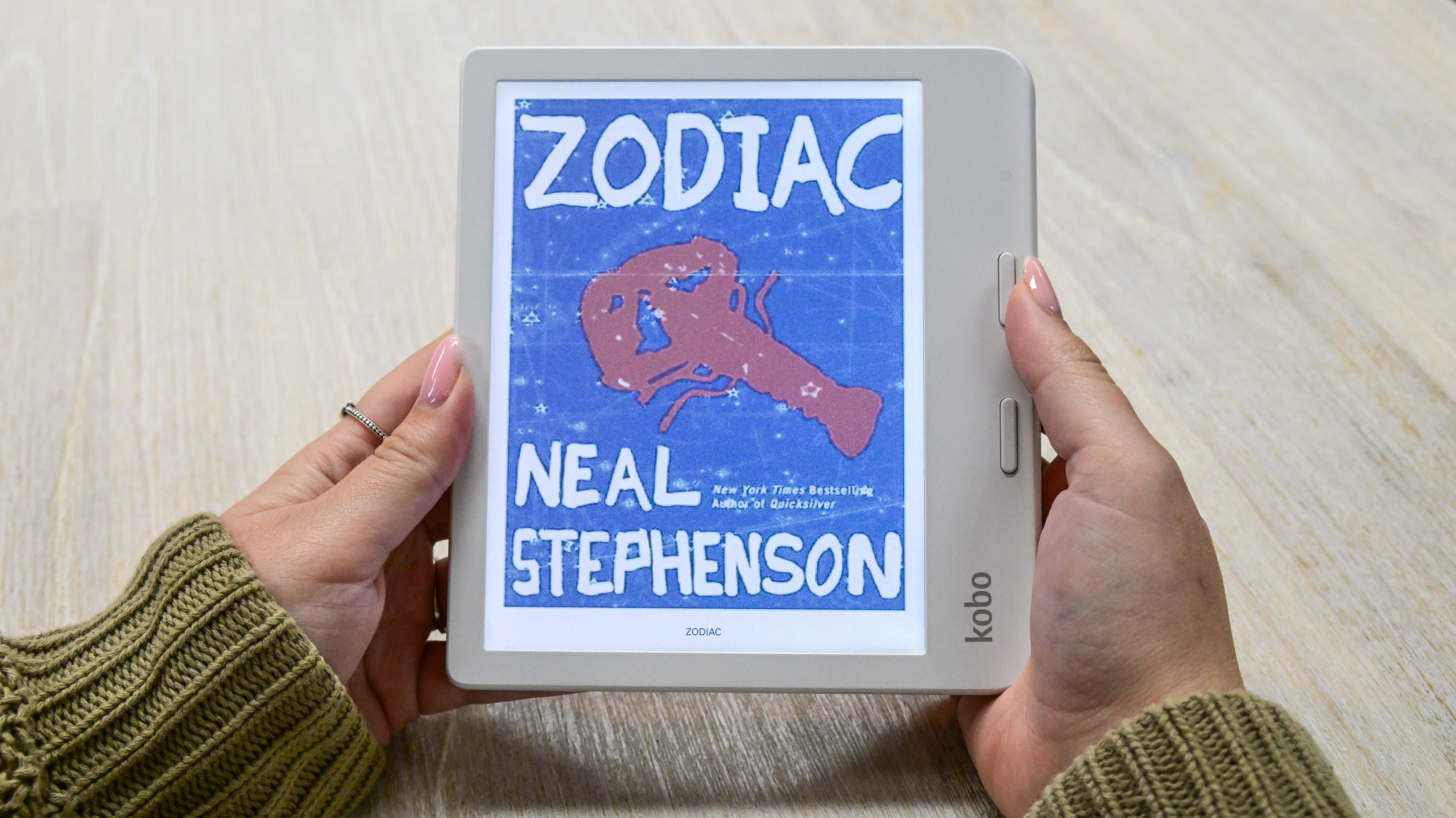
Kobo Libra Colour review: Price and availability
- Launch price of $219.99 / £219.99 / AU$359.95
- Available to purchase off shelves from April 30, 2024
- Kobo Stylus 2 and sleepcover sold separately
- Spare parts and guides available via iFixit
Available in two colors – black and white – the Kobo Libra Colour is quite competitively priced at $219.99 / £219.99 / AU$359.95. That, as I’ve just mentioned, makes it a lot more affordable than some of its competition. However, it doesn’t ship with a stylus, so if you want to take full advantage of the Libra Colour’s new features, you’ll need to invest an additional $69.99 / £69.95 / AU$119.95 for the Kobo Stylus 2. The good thing about this pen is that it charges via USB-C, so there’s no ongoing battery costs to worry about.
Even with the price of the stylus piled on, it’s still cheaper than the likes of the Onyx Boox Tab Mini C, which is currently my pick for the best color ereader and retails for $450 / £450 / AU$765. That said, it’s hard comparing the two as the Onyx ships with a capacitive stylus, has a bigger 7.8-inch screen, has 64GB of storage (compared to 32GB in the Libra Colour) and a 5,000mAh battery that’s double of what Kobo offers in its biggest ereader.
Another point of comparison would be the 7.8-inch PocketBook InkPad Color 3 that will set you back $329 / £345 / AU$595 and not offer you any writing features.
Long story short, the Kobo Libra Colour, just like its predecessor, is pretty good value. To add a little more comparison, the Kobo Libra 2 currently retails for $189.99 / £169.99 / AU$319.95 at full price, so it really isn't a huge leap in price.
Adding to its value is the fact that it can be repaired when the need arises. Kobo has partnered with iFixit to sell spare parts – specifically the battery, screen and the motherboard. The battery will set you back $44.99 / £39.99 / AU$75.99, but note that you will need purchase additional tools to make the correct repairs. Repairing the Libra Colour won't exactly be 'cheap', but it will cost a sight less than buying a new one. Note, however, that if your Libra Color is still under warranty, you are eligible for a replacement – you can contact Kobo for more information on how to enable that process.
- Value score: 5 / 5

Kobo Libra Colour review: Specs
| Display type: | E Ink Kaleido 3 |
| Screen size: | 7 inches |
| Resolution: | 300ppi for B&W; 150ppi for color |
| Processor: | 2GHz |
| Frontlight: | ComfortLight Pro (warm and cold) |
| Storage: | 32GB (non-expandable) |
| Battery: | 2,050mAh |
| Water protection: | IPX8 |
| Software: | Linux based |
| Connectivity: | Wi-Fi, Bluetooth, USB-C |
| File support: | 10 document, 5 image, 1 audio |
| Dimensions: | 144.6 x 161 x 8.3 mm |
| Weight: | 199.5g |
Kobo Libra Colour review: Design and display
- Identical body to the Kobo Libra 2
- 7-inch E Ink Kaleido 3 touchscreen
- Magnetic edge to hold the (optional) stylus
For someone who’s used the previous two Kobo Libra ereaders, I will admit to initially being a little disappointed that the design hasn’t changed over the Libra 2. That’s only because I’ve been seeing it since 2019, but I’ll also be the first to admit that it’s one of the most ergonomic designs I've used in an ereader.
Built for single-hand use, the edge of the thicker bezel is still slightly curved upward, with the two page-turn buttons perfectly placed to provide a comfortable grip. The back panel is textured, which adds to the secure grip, and the power switch on the rear is still the same round, concave. Also inherited from the Libra 2 is the round, white indicator light that glows when you pop a USB-C cable into the charging port. The entire thing is still encased in plastic, which is made from 80% recycled materials, including ocean-bound plastics.
It’s quite impressive that Kobo has managed to keep the weight of the device down despite using a larger capacity battery in the Libra Colour. It weighs just 199.5g without a case, which is lighter than the Libra 2 that tips the scales at 215g.
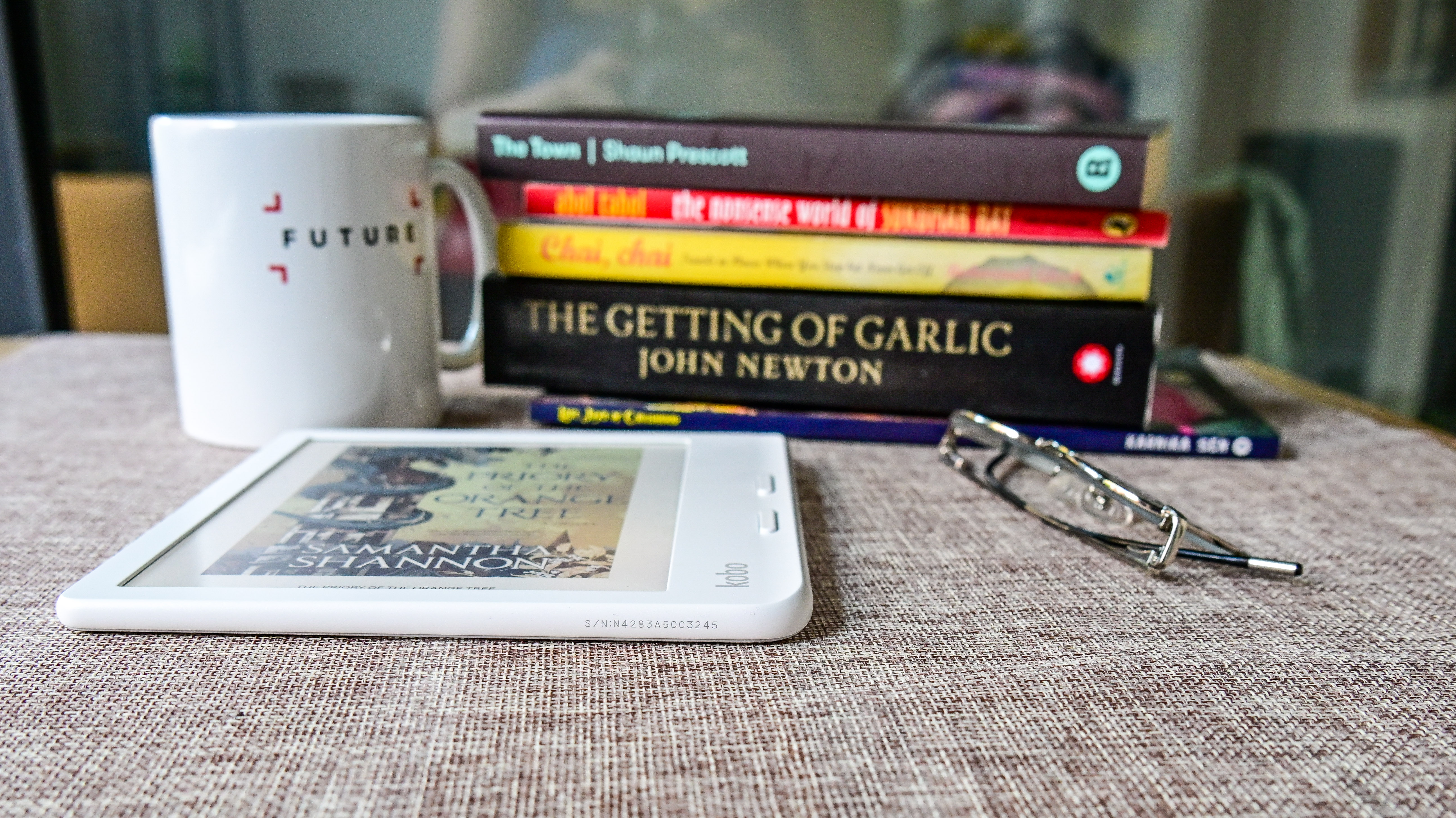
For anyone who’s planning on using the new Libra Colour for note-taking and scribbling, Kobo has ensured the stylus stays magnetically secure on the edge of the slim bezel. I’ve complained previously that this magnetic edge on some ereaders isn’t always very secure, but it seems quite strong here.
Speaking of the pen: it’s recommended that you use the Kobo Stylus 2 with the Libra Colour, which is the only one of Kobo’s pens that will stick to the side of the device. That said, the older Kobo Stylus will also work on the Libra Colour, but can’t be secured magnetically and requires a single AAAA battery. The Stylus 2, on the other hand, charges via USB-C and is, thus, lighter.
What stands out from a design perspective is the screen – it can display colors! It still retains the 7-inch screen size of the other Libra devices, but utilizes the E Ink Kaleido 3 display that I’ve seen in other color ereaders like the Onyx Boox Tab Ultra C and the Onyx Boox Tab Mini C. While this screen tech can display 4,096 colors, they don’t appear as saturated as they look on a phone, laptop or tablet – they’re a little muted in comparison, but that’s the limitation of the e-paper screen technology.
The 7-inch screen on the Libra Colour, however, makes the colors look a touch truer as compared to what you’d see on a 7.8-inch or larger e-apaper screen, even when the bigger devices share the same screen tech and resolution. This is because on the smaller screen the pixels are packed more tightly together, providing more contrast. You get 150ppi resolution when reading in color (as with all other color ereaders using this screen), but it’s 300ppi when you’re viewing something in black and white, which is standard for monochrome ebook readers.

While Onyx uses a glass sheet as the top layer of its display, Kobo seems to have adopted plastic – one way to keep costs low. This top layer is very smooth, which you can feel when writing on the device and the experience of scribbling on the Libra Colour is likely going to take some getting used to. It feels like you’re writing over a sheet of very smooth plastic, with no friction at all and I can't say I'm a fan.
As with all the more premium Kobo ereaders, the Libra Colour screen is also lit up with ComfortLight Pro which, when set to, automatically changes the light hue from cool to warmer tones as the day progresses. This reduces the amount of blue light hitting your eye closer to bedtime.
One issue I’ve had previously with some ereaders, particularly with a black chassis, are oily fingerprint smudges. I was sent the white colorway of the Libra Colour for this review which, like the Libra 2, shows no such thing. I haven’t seen the black version of this device so can’t tell for sure whether this will be an issue or not, but I didn’t have this problem with the Libra H2O, so I’m going to hope not.
Along with its 2024 siblings, the Libra Colour can be repaired, with parts and tools now available via iFixit in select countries. Self-repairs can be carried out once your ereader's warranty has expired and, although I've not had the opportunity to try any of the repair kits, the step-by-step guides look easy to follow.
- Design & display score: 4.5 / 5
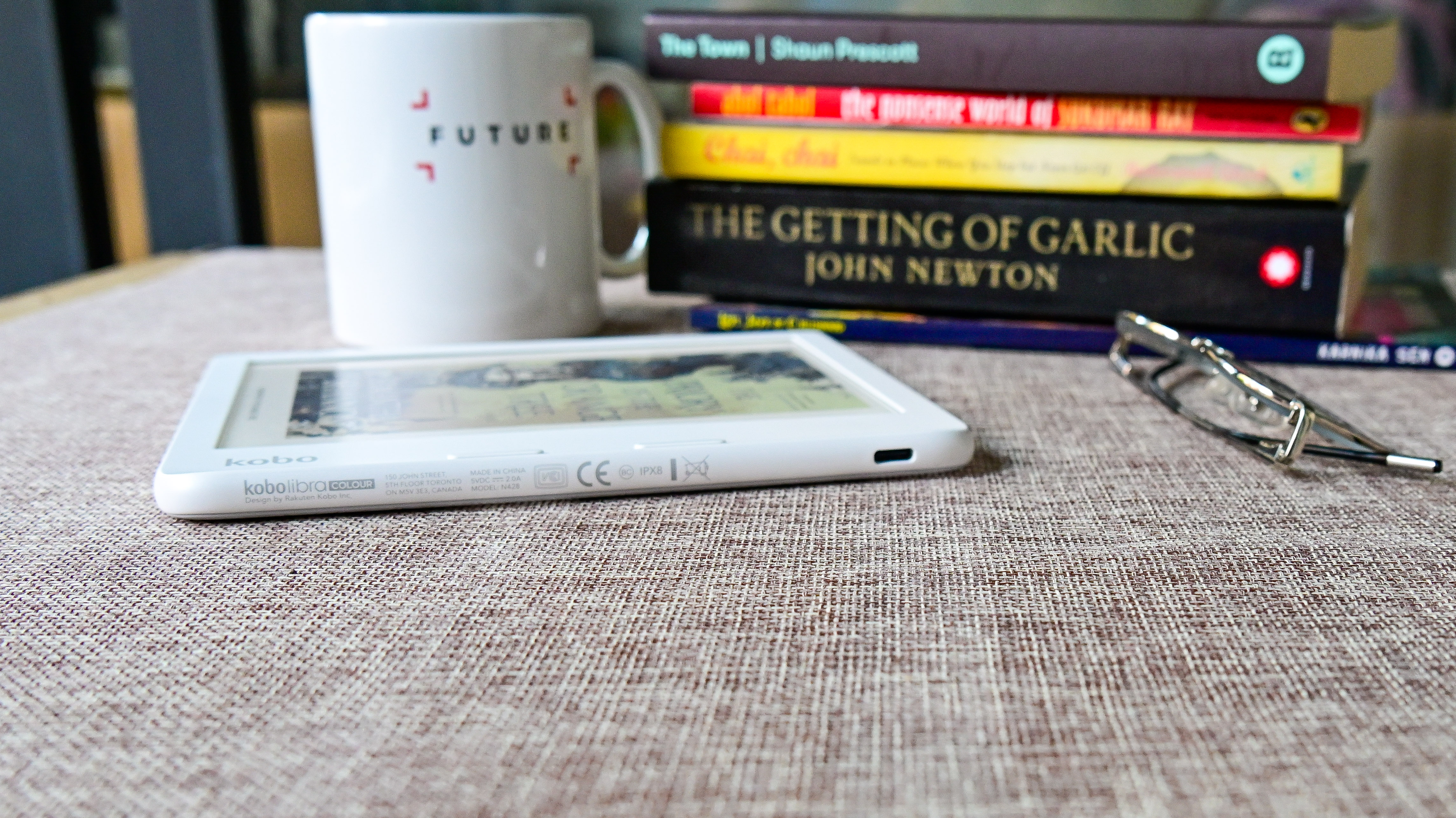
Kobo Libra Colour review: User interface
- Easy-to-use, streamlined interface
- Full suite of Kobo’s writing features
- Notes easily exported to Google Drive and Dropbox
I’ve always been a fan of Kobo’s user interface – it’s streamlined, very easy to navigate and wrap your head around. It only takes minutes to figure your way around if you’ve never used a Kobo device before. That hasn’t changed but, for the Libra line, there is one major difference to the interface.
There is now the My Notebooks tab smack bang in the center of the bottom navigation bar. This gives you the full suite of Kobo’s writing features, including the Advanced Notebooks that I said made the Kobo Elipsa 2E a better note-taker than the Amazon Kindle Scribe. I will admit that writing on a 7-inch screen, particularly if there’s a lot to jot down, can feel a little constricted, but then I have been using the 10-inch Kobo Elipsa 2E as my everyday ereader and note-taker for the last few months, so dropping down to a smaller notebook size is my bias and may not bother other users.
The other change to the interface is the addition of color… and I don’t mean the book covers displayed on the home screen. Every time you select a tab from the bottom navigation bar, it changes color from black to brown. In fact, if you’re downloading books – whether from Dropbox, Google Drive or the Kobo Store – the status bar is also the same color. That’s a nice touch that I haven’t seen in other color ereaders I’ve tested.
Everything else about the Libra Colour is quintessential Kobo – good file format support, including EPUBs that Amazon requires you to jump through hoops to read on a Kindle. There are a total of 10 document file types that Kobo supports by default, and this includes text and comic formats. There are also four image files supported. The only audio file support, though, is for Kobo’s own audiobooks that you can download from the Kobo Store or via a subscription to Kobo Plus. Note that Kobo Plus isn’t available in all markets that Kobo operates in, but it is in the US, UK, Australia, New Zealand and select European countries.

As I’ve mentioned earlier in this review, you can sign into either Dropbox or Google Drive to help transfer books. The partnership with Google is relatively new, so Kobo has a single-page instruction sheet (in PDF) already in the device’s library. It’s very seamless to use either cloud service, and that also holds true for transferring any notes or notebooks. The latter can also be accessed via the Kobo app on your phone if you need any of them in a pinch.
I haven't seen other color ereaders using the E Ink Kaleido 3 screen offer a dark mode option, but it's available on the Libra Colour. True to form, it only inverts the text colors, not any book covers or notes. The home screen will still be displayed on a white background, as will all your notebooks, so it's only the text within ebooks that can have white text on a black background.
If you don't want to use the dark mode, there are amber LEDs that allow you to change the white light hue to warmer tones to help you reduce the blue light emitted by the screen. I am quite impressed at how bright the Libra Colour can get at full bore – not many other ereaders that I've tested that can match that, not even the Kobo Clara Colour that launched alongside it.
You can easily adjust the light – brightness and temperature – by tapping on top of the screen to bring up the quick controls. Like the previous Libra 2 and the newer models, you can set the light temperature to change automatically at a specific time in the evening or night. You can also slide up and down the left edge of the screen to change brightness.
OverDrive, as with all Kobo ereaders, is still baked in and despite it being replaced by Libby on mobile, it is still supported on the e-ink tablets. This means, if your local public library also has OverDrive support, you can borrow digital books and magazines directly from your device without having to leave home – you just need a library card.
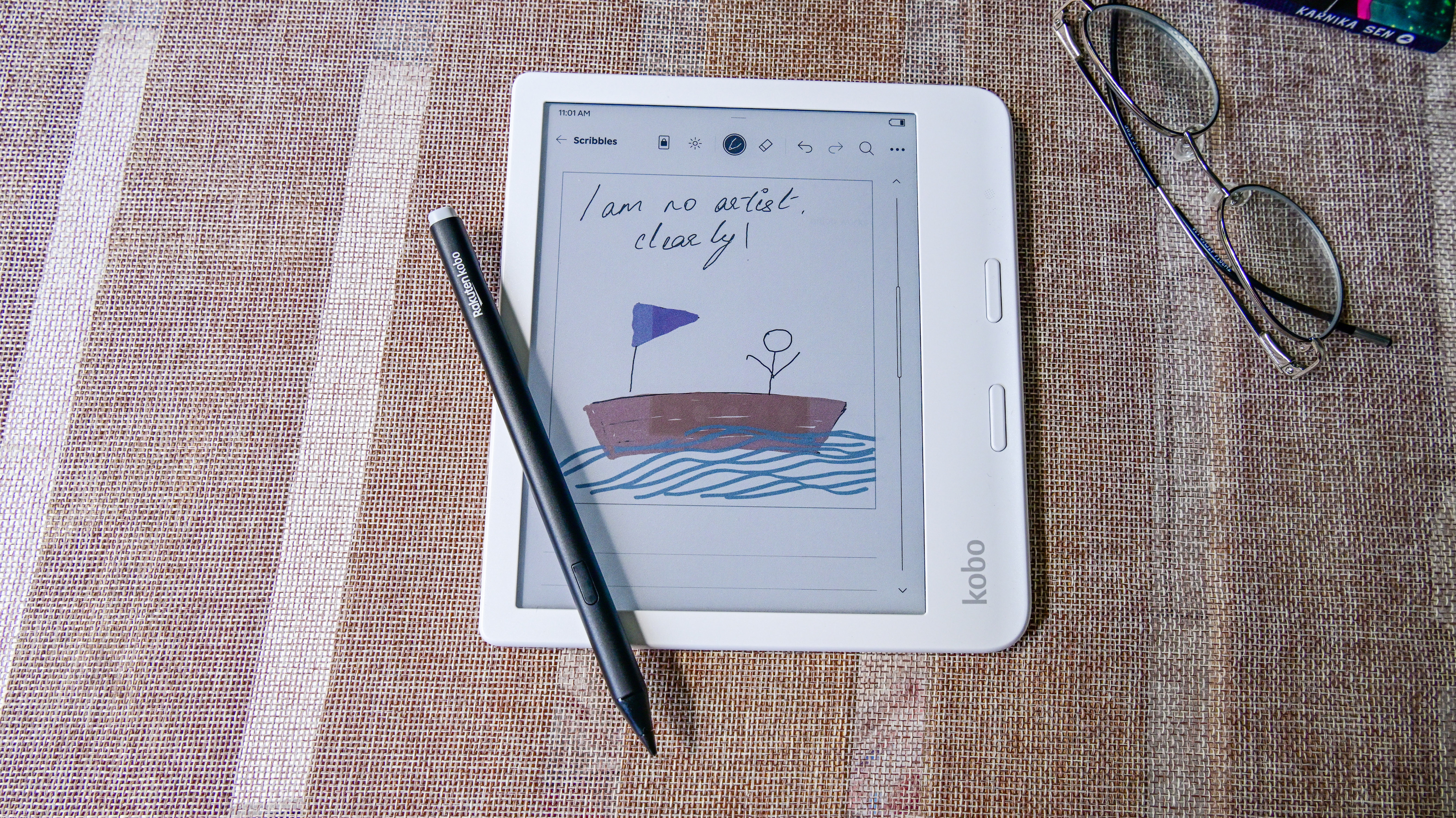
Pocket support is also integrated into the Libra Colour. This is a browser plugin that allows you to save online articles to read later – you just sign into your Pocket account on the Kobo and you’ll have access to anything you’ve previously saved.
Auto-rotation is also available, so you can read in either portrait or landscape mode. This can get a little annoying, though, as a small change in angle when holding the device can change the orientation of the page you’re on. So you can lock the orientation to one or the other to prevent this from happening.
Admittedly Onyx Boox devices give you plenty more options when it comes to customization and functionality within the user interface, but I think they’re overkill and it takes a steep learning curve to get the hang of it all.
- User experience score: 5 / 5
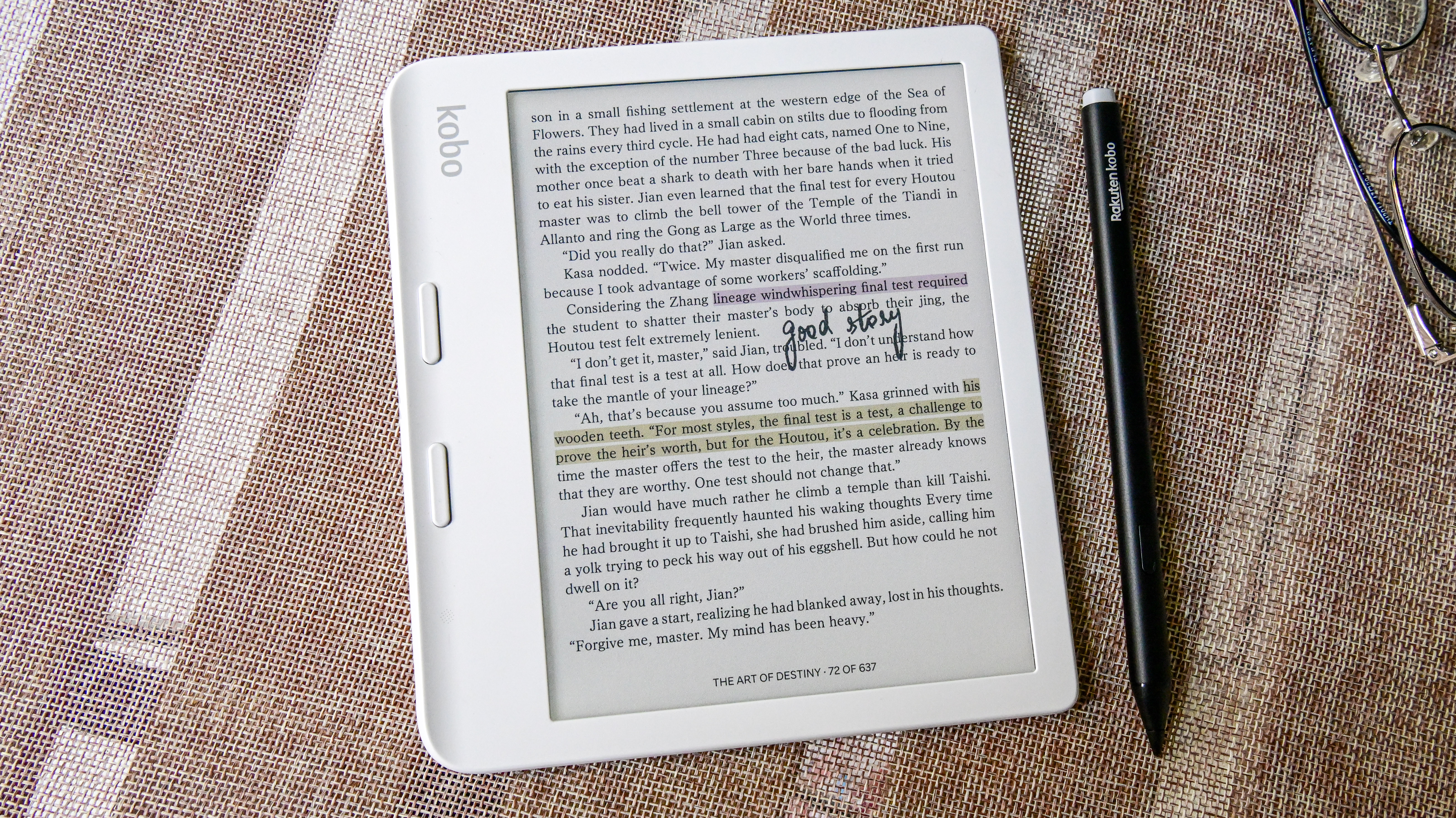
Kobo Libra Colour review: Performance
- Sharp display, with good colors due to screen size
- Excellent handwriting recognition
- Very responsive, but a couple of functions have a significant lag
Adding features to a tech product means it’s going to need some extra power to make sure things run smoothly and Kobo has done that by upgrading the processor for the Libra Colour. Instead of the previous 1GHz CPU, it’s now 2GHz and that seems to do the trick. After two weeks with the Libra Colour, I’ve had nothing to complain about, although there are two very specific functions that suffer from a significant lag.
Opening an ebook from either the home screen or the My Books page keeps you waiting about 7-10 seconds before something happens. Similarly, the Back To Home button on the top left corner of a page also takes a few seconds to initiate. I’m putting this down to teething problems for now and it’s a software issue, so I think it’s likely fixable via a firmware update.
Everything else, though, runs smoothly. There’s no lag when writing and drawing, neither are there any when triggering a page turn either via the buttons or tapping on the screen. Using the onscreen keyboard is also quite good.

I’ve tested color ereaders before in the 7.8-inch size category as well as 10-inch, and I’ve come to expect a lack of saturation when viewing in color. The Libra Colour exceeded my expectations, not because Kobo is doing anything differently, but because the smaller screen packs the pixels more tightly, adding more contrast which, in turn, gives some images depth and better saturation. 7 inches isn’t ideal for reading comics and graphic novels, but just to see better color saturation I would recommend it. Even highlight colors available when reading a title – which are the same across all color-screen ereaders – look a touch more saturated in comparison to larger-screen devices.
One thing that Kobo has always done well is handwriting recognition and that’s been brought over to the Libra Colour. This feature only works in the Advanced Notebooks when you want to digitize your scribbles, but it can even recognize sub- and superscripts. I had two other colleagues try this feature and Kobo almost aced it each time – it misspelt only one word that no human was able to decipher anyway.
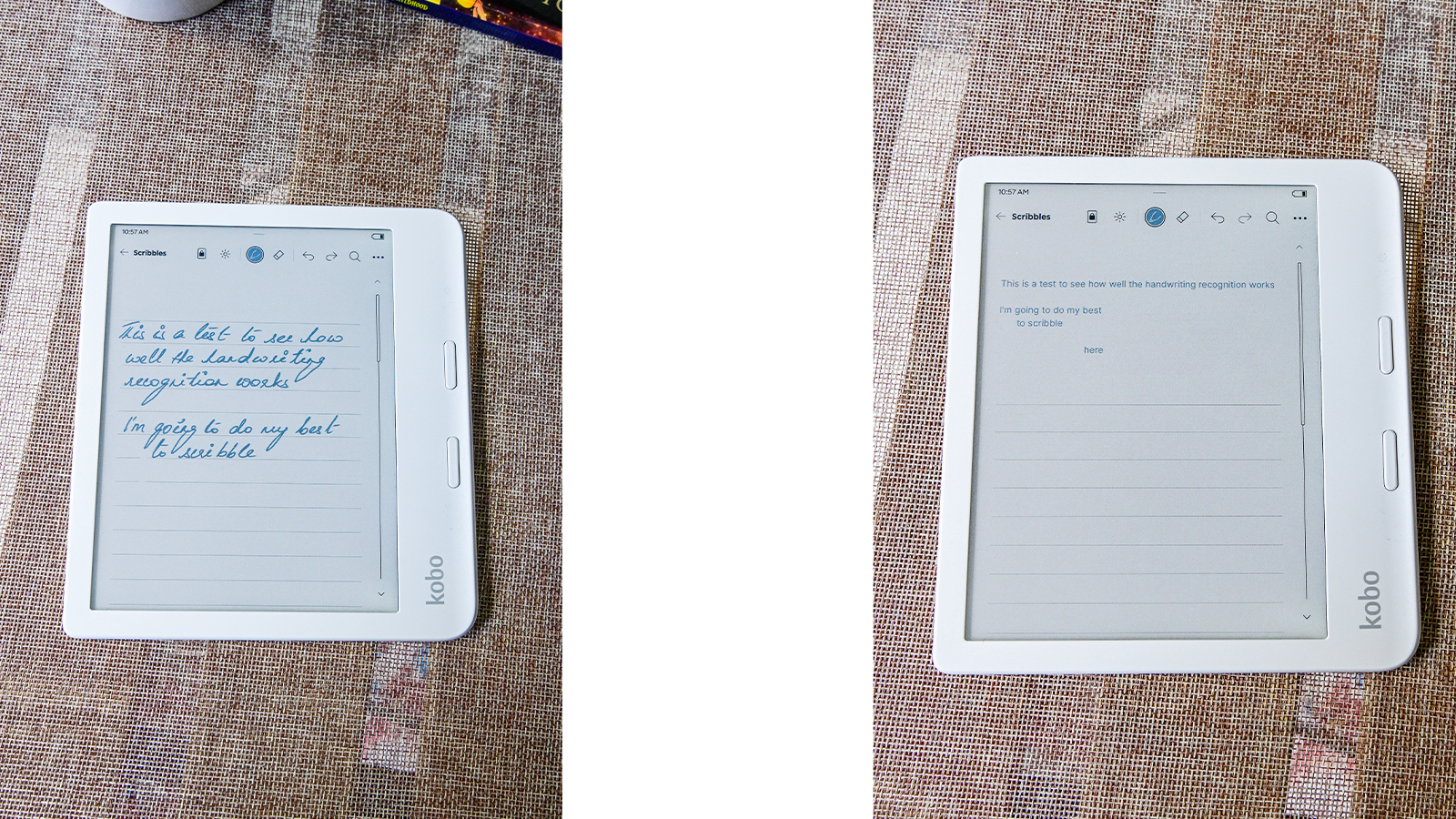
During my limited time with the Libra Colour, I experienced no ghosting – something that bothers me no end with Onyx ereaders. Two weeks with the device, however, may not be enough to say for sure that ghosting won’t be a problem, and I would expect some along the way. Still, I am impressed.
Additional functionality with a better CPU needs to be matched with enough battery life to keep an ereader going for weeks as opposed to days. So Kobo has upped the battery capacity in the Libra Colour to 2,050mAh compared to 1,500mAh in the Libra 2. This got me about 14 hours of use in total.
My testing was a little sporadic, averaging about 45 minutes of use over each day over two weeks (sometimes a little more, sometimes less). I started using the device straight out of the box at 82% battery life and didn’t top up till it hit 19% after two weeks. I’d say that’s pretty good, considering I was writing, reading and listening to audiobooks via Bluetooth. I had Wi-Fi on all the time, the screen was set at 20% brightness, and a refresh set to every 5 pages. It’s also important to note that a page refresh occurs more frequently when writing, and every erase triggers another refresh too. So the bigger battery capacity is definitely working in Kobo’s favor here.
Topping up via the USB-C port is quick, but like the previous Kobos, trickle charging kicks in at about 96%. It took the Libra Colour about 55 minutes to go from 19% to 96%, then another 45 minutes to top up completely. While it might seem annoying to have to wait that long for just a tiny bit more charge, trickle charging can preserve the battery, adding to its overall lifespan.
- Performance score: 5 / 5
Should I buy the Kobo Libra Colour?
| Attribute | Notes | Score |
|---|---|---|
| Value | It’s competitively priced and possibly one of the most affordable color ereaders on the market. | 5/5 |
| Design & display | A winning design remains, with a display that works really well in 7 inches. Writing on it, however, feels awkward. | 4.5/5 |
| User interface | Kobo’s UX has always been streamlined and the winning streak continues. | 5/5 |
| Performance | Responsive and sharp, with great battery life, there’s little to fault here. | 5/5 |
Buy it if...
You want a full-featured, all-round ereader
Unlike the previous Kobo Libras before it, the Libra Colour not only gets you a color display, but also writing capabilities. This ereader does it all!
You want a portable yet well-sized ereader
6 inches can be too small for some readers, while 8 inches and bigger can be an annoyance to carry around. At 7 inches, the Libra Colour hits the sweet spot for both portability and usability.
You want bang from your hard-earned buck
I won’t call it cheap, but considering the features you’re getting, the Libra Colour is well priced and carries on the Libra trait of offering good value.
Don't buy it if...
You don't need a note-taking ereader
If all you want is a dedicated ebook reader that doesn’t necessarily have all the bells and whistles, you can save money by picking up a Kindle, or opt for a tablet like the Kobo Clara Color or Kobo Clara BW that launched alongside the Libra Colour.
You read a lot of comics and graphic novels
While the Libra Colour displays colors well, the 7-inch screen size isn’t the best at displaying certain comics and graphic novel pages. Frames can get cut, which could affect the way you enjoy the book.
You plan to take full advantage of Kobo’s Advanced Notebooks
This really is me nitpicking to find fault, but an Advanced Notebook allows you to insert diagrams, mathematical equations and formulae, plus do a whole load of other things in a single document, which just keeps scrolling down. If you want a full picture of the final notebook before you export it, you’ll need a larger screen than the 7-inch Libra Colour.
Also consider
I think the Kobo Libra Colour is the Japanese-Canadian brand’s best device yet, but if you’re not convinced and need alternatives, take a look at the two options below, including a specs comparison with this ereader.
| Header Cell - Column 0 | Kobo Libra Colour | Onyx Boox Tab Mini C | Kobo Clara Colour |
|---|---|---|---|
| Price | $219.99 / £219.99 / AU$359.95 | $450 / £450 / AU$765 | $149.99 / £139.99 / AU$259.95 |
| Screen | 7-inch E Ink Kaleido 3 | 7.8-inch E Ink Kaleido 3 | 6-inch E Ink Kaleido 3 |
| Resolution | 300ppi B&W / 150ppi color | 300ppi B&W / 150ppi color | 300ppi B&W / 150ppi color |
| Operating system | Linux based | Android 11 | Linux based |
| Storage | 32GB | 64GB | 16GB |
| CPU | 2GHz | 2GHz | 2GHz |
| Battery | 2,050mAh | 5,000mAh | 1,500mAh |
| Connectivity | Wi-Fi, Bluetooth, USB-C | Wi-Fi, Bluetooth, USB-C | Wi-Fi, Bluetooth, USB-C |
| Waterproofing | IPX8 | None | IPX8 |
| File support (including images & audio) | 16 | 24 | 16 |
| Speakers | None | Built-in; dual | None |
| Dimensions | 144.6 x 161 x 8.3 mm | 194 x 136.5 x 8.3 mm | 112 x 160 x 9.2 mm |
| Weight | 199.5g | 310g | 174g |
Onyx Boox Tab Mini C
If you’d like a slightly bigger color e-ink screen, this ereader can give you that. Note, however, that the colors will appear a bit muted as the pixel density is lower compared to a 7-inch display. However, you do get an exhaustive list of features, more storage, a bigger battery and a stylus included. It also costs a lot more than the Libra Colour.
Read my in-depth Onyx Boox Tab Mini C review for more details.
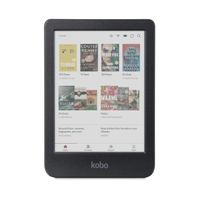
Kobo Clara Colour
Having launched alongside the Libra Colour, the Clara Colour will cost you a lot less for a color ereader. It lacks writing capabilities, but if a color display is your main priority, this has what you need in a very portable size of 6 inches. I’m in the process of testing this and will update this article with a link to the review soon.
How I tested the Kobo Libra Colour
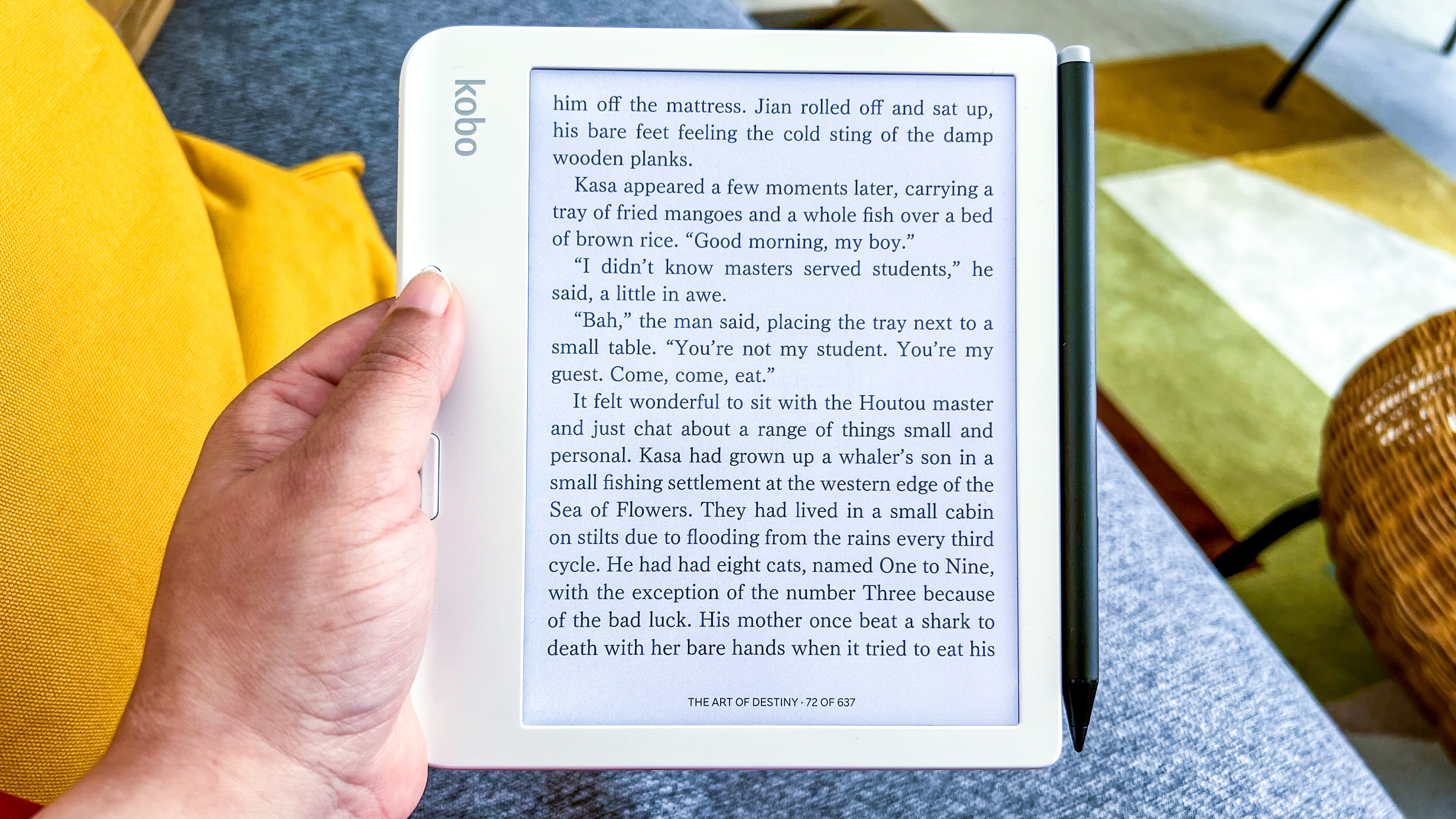
- Used as main reading and writing device for two weeks
- Listened to audiobooks via a Kobo Plus subscription
- Used Google Drive to transfer files, including notes written on the device
My regular e-ink device is the Kobo Elipsa 2E, but switching to the Libra Colour was just a matter of signing into my Kobo account to sync all my ebooks, notes and also access my Kobo Plus subscription.
I also have an existing library of ebooks in the EPUB format saved in Google Drive, so signing into that via the Libra Colour’s More tab gave me instant access to those, from where I saved a handful of titles to read on the device.
While I can’t draw to save my life, I did some random scribbling on the device – both while reading a book as well as in notebooks. I even got some colleagues to try the handwriting recognition feature.
I have an existing Kobo Plus subscription which gave me access to audiobooks on the Libra Colour, and I spent about 20 minutes listening to one title during my testing of the device.
All new notes and annotations that I made on the Libra Colour automatically updated to my Kobo Elipsa 2E as soon as it connected to Wi-Fi, giving me access across multiple devices.
Read more about how we test
[First reviewed April 2024]

While she's happiest with a camera in her hand, Sharmishta's main priority is being TechRadar's APAC Managing Editor, looking after the day-to-day functioning of the Australian, New Zealand and Singapore editions of the site, steering everything from news and reviews to ecommerce content like deals and coupon codes. While she loves reviewing cameras and lenses when she can, she's also an avid reader and has become quite the expert on ereaders and E Ink writing tablets, having appeared on Singaporean radio to talk about these underrated devices. Other than her duties at TechRadar, she's also the Managing Editor of the Australian edition of Digital Camera World, and writes for Tom's Guide and T3.

